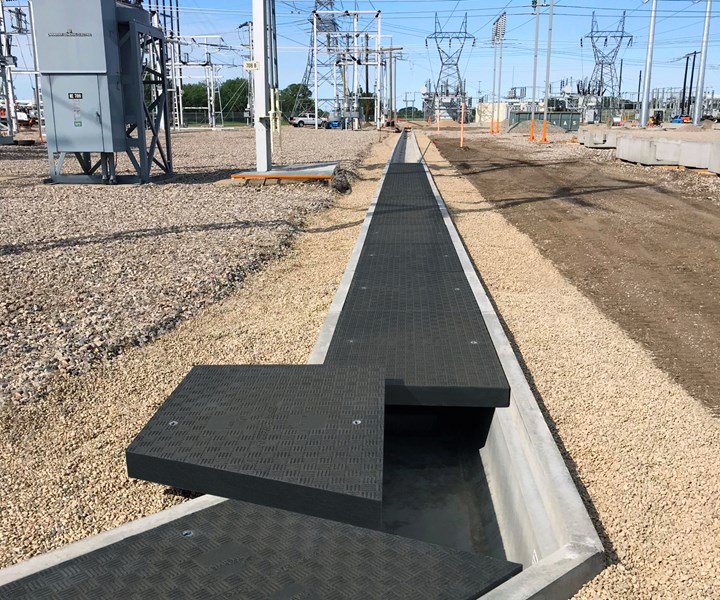I have seen the future and it is coming
The last 20 years were good to composites. What does the next 20 years have in store?

The cover story for CW’s March 2020 issue explores the growing use of composites in infrastructure.
Now that the first two decades of the 21st century are behind us, there is a natural tendency to look back at the last 20 years and take stock of things — personally, professionally, culturally, etc. The result has been a long stream of “best of” and “worst of” lists that attempt to put what’s happened to us in perspective.
We can do the same with composites manufacturing and look back on what has been, arguably, the most consequential 20 years of growth the industry has ever seen. In all this looking backward, however, I keep asking myself: What do the last 20 years in composites M&P tell us about the next 20 years? The short answer is that I don’t know. But I do have a few things that should be watched.
The first is cost. If you have been in this industry for any length of time, you know that composites tend to be — on a unit basis — more expensive than legacy materials. And for many years, this was a huge hurdle. It was just plain difficult to get potential customers to look past the up-front cost of replacing a metallic part with a composite one. Then, a few years ago, we started hearing about composites “buying their way onto” programs. Thus began a more concerted effort to evaluate how composites might prove more cost-effective over the life of a part or structure. This is made possible because composites are more durable than legacy materials. And, when weight-saving is involved, cascading benefits include fuel and energy conservation. For many years, a value-add of composites has been the maintenance advantage they convey. As the Boeing 787 and the Airbus A350 enter their second decade of service, and as airlines assess the performance of these composites-intensive aircraft, I think we are going to discover that the ease of maintenance of composite structures is, in fact, a major benefit.
What do the last 20 years in composites M&P tell us about the next 20 years?
The second is automation/data. I throw these two together because they go hand-in-hand. One of the consequences of composites becoming a part of the standard materials pallette for manufacturers is that expectations are raised. The industry’s dependence on hand layup and spreadsheets just won’t cut it in the next 20 years. Every major end market that consumes composite materials is going to do so at volumes heretofore unseen. Single-aisle replacements for the 737 and the A320 will be built at rates of 60-100 per month. Everyday car and truck models are produced at rates of 500,000 per year. The wind industry, already the largest consumer of composite materials, is poised to grow substantially in the next 20 years. And if the oil and gas industry wakes up tomorrow and decides that composite pipes are the future, there might not be enough carbon fiber in the world to do the job. The only way to keep up is with automation that meets the volume, quality and consistency requirements of the customer. And, very soon, you will not be able to deliver a composite part or structure to a customer without data that documents conformance to design, material, processing, finishing and quality specifications. In short, if you are a composites fabricator and have not hired a chief data officer, start looking.
The third, and final, is design engineering. Composites are great because the variety of resin, fiber and process types available engender engineered solutions for almost any application. Composites are a challenge because the variety of resin, fiber and process types available engender engineered solutions for almost any application. All of this complexity, it turns out, is difficult to model in a software environment. Over the last 20 years, this has created design uncertainty — the lingering feeling that the composite part you designed might or might not perform as expected. This has led to the 10% Rule: Design your composite part to the spec, and then add 10% (resin, fiber, etc.) just in case. That uncertainty will go away in the next 20 years; design software is well on its way to more than matching composites’ complexity.
Am I wrong? Time will tell, or you can tell me. Let me know what you think the next 20 years has in store. Email me at jeff@compositesworld.com.
Related Content
Combining multifunctional thermoplastic composites, additive manufacturing for next-gen airframe structures
The DOMMINIO project combines AFP with 3D printed gyroid cores, embedded SHM sensors and smart materials for induction-driven disassembly of parts at end of life.
Read MoreDevelopment of a composite liquid hydrogen tank for commercial aircraft
Netherlands consortium advances cryogenic composites testing, tank designs and manufacturing including AFP, hybrid winding, welding of tank components and integrated SHM and H2 sensors for demonstrators in 2025.
Read MoreInfinite Composites: Type V tanks for space, hydrogen, automotive and more
After a decade of proving its linerless, weight-saving composite tanks with NASA and more than 30 aerospace companies, this CryoSphere pioneer is scaling for growth in commercial space and sustainable transportation on Earth.
Read MoreLow-cost, efficient CFRP anisogrid lattice structures
CIRA uses patented parallel winding, dry fiber, silicone tooling and resin infusion to cut labor for lightweight, heavily loaded space applications.
Read MoreRead Next
Ceramic matrix composites: Faster, cheaper, higher temperature
New players proliferate, increasing CMC materials and manufacturing capacity, novel processes and automation to meet demand for higher part volumes and performance.
Read MoreScaling up, optimizing the flax fiber composite camper
Greenlander’s Sherpa RV cab, which is largely constructed from flax fiber/bio-epoxy sandwich panels, nears commercial production readiness and next-generation scale-up.
Read MoreUltrasonic welding for in-space manufacturing of CFRTP
Agile Ultrasonics and NASA trial robotic-compatible carbon fiber-reinforced thermoplastic ultrasonic welding technology for space structures.
Read More












